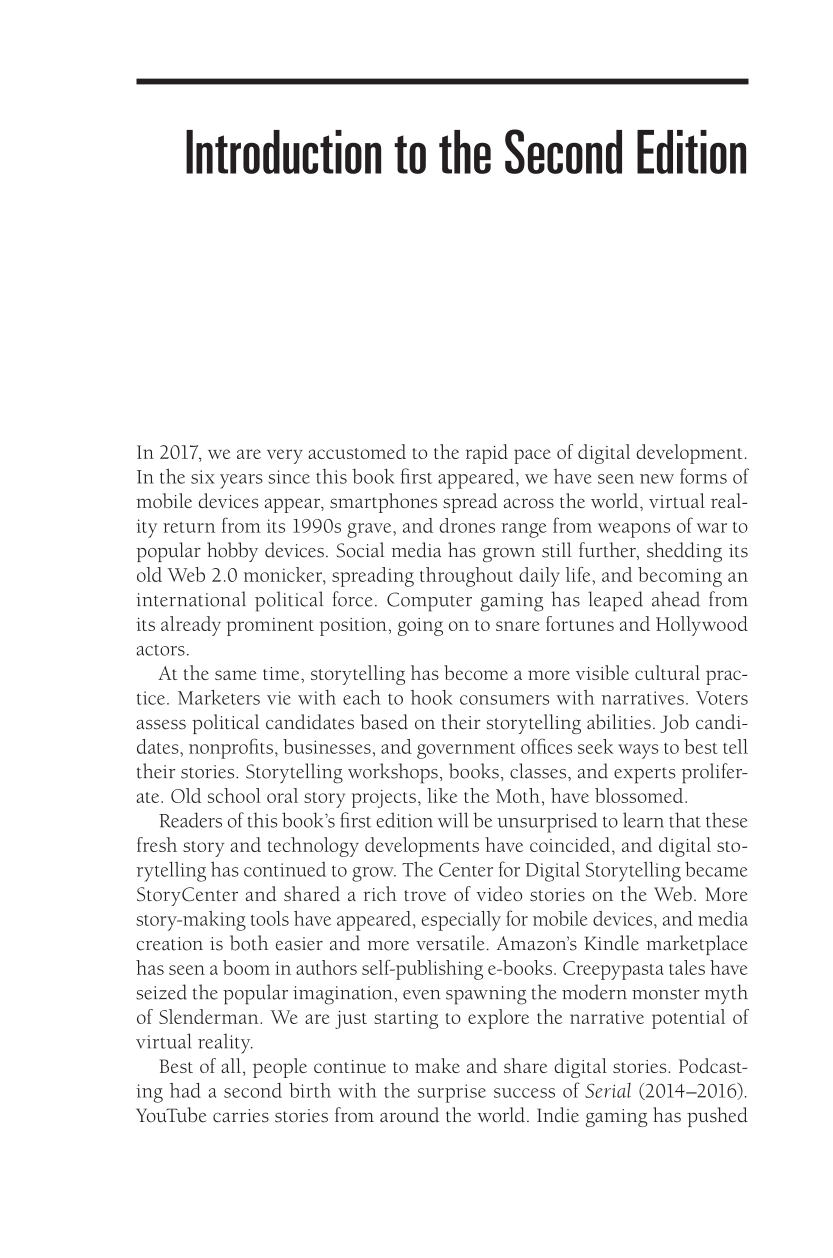Introduction to the Second Edition
In 2017, we are very accustomed to the rapid pace of digital development.
In the six years since this book first appeared, we have seen new forms of
mobile devices appear, smartphones spread across the world, virtual real
ity return from its 1990s grave, and drones range from weapons of war to
popular hobby devices. Social media has grown still further, shedding its
old Web 2.0 monicker, spreading throughout daily life, and becoming an
international political force. Computer gaming has leaped ahead from
its already prominent position, going on to snare fortunes and Hollywood
actors.
At the same time, storytelling has become a more visible cultural prac-
tice. Marketers vie with each to hook consumers with narratives. Voters
assess political candidates based on their storytelling abilities. Job candi-
dates, nonprofits, businesses, and government offices seek ways to best tell
their stories. Storytelling workshops, books, classes, and experts prolifer-
ate. Old school oral story projects, like the Moth, have blossomed.
Readers of this book’s first edition will be unsurprised to learn that these
fresh story and technology developments have coincided, and digital sto-
rytelling has continued to grow. The Center for Digital Storytelling became
StoryCenter and shared a rich trove of video stories on the Web. More
story-making tools have appeared, especially for mobile devices, and media
creation is both easier and more versatile. Amazon’s Kindle marketplace
has seen a boom in authors self-publishing e-books. Creepypasta tales have
seized the popular imagination, even spawning the modern monster myth
of Slenderman. We are just starting to explore the narrative potential of
virtual reality.
Best of all, people continue to make and share digital stories. Podcast-
ing had a second birth with the surprise success of Serial (2014–2016).
YouTube carries stories from around the world. Indie gaming has pushed

































































































































































































































































































































